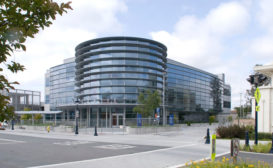Projects
MAXXI/National Museum of XXI Century Arts
MAXXI: Zaha Hadid Taps into Rome's past while creating its most contemporary building in decades.
Read More
Penn State Hershey Cancer Institute
A building's design expresses and supports its client's mission of blending research and treatment.
Read More
Vivian and Seymour Milstein Family Heart Center
A beautifully daylit infill addition between a hospital and an office building harvests precious space for diagnostics, treatment, and surgery.
Read More
Santa Clara Valley Specialty and Health Centers by Anshen + Allen
County of Santa Clara, California
October 16, 2010
St. Anthony Hospital
Zimmer Gunsul Frasca Architects' hospital and medical office building avoids an institutional look through natural materials and evidence-based design.
Read More
Copyright ©2024. All Rights Reserved BNP Media.
Design, CMS, Hosting & Web Development :: ePublishing



